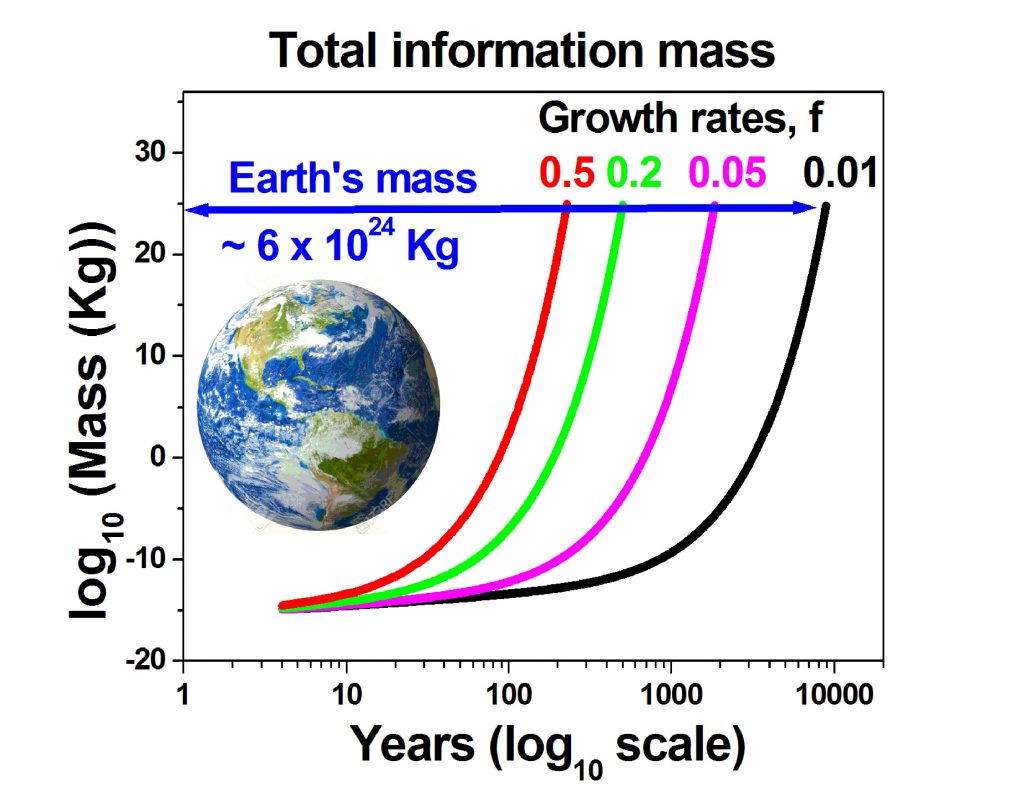From the Journal: AIP Advances
WASHINGTON, August 11, 2020 — As we use resources, such as coal, oil, natural gas, copper, silicon and aluminum, to power massive computer farms and process digital information, our technological progress is redistributing Earth’s matter from physical atoms to digital information — the fifth state of matter, alongside liquid, solid, gas and plasma.

Eventually, we will reach a point of full saturation, a period in our evolution in which digital bits will outnumber atoms on Earth, a world “mostly computer simulated and dominated by digital bits and computer code,” according to an article published in AIP Advances, by AIP Publishing.
It is just a matter of time.
“We are literally changing the planet bit by bit, and it is an invisible crisis,” author Melvin Vopson said.
Vopson examines the factors driving this digital evolution. He said the impending limit on the number of bits, the energy to produce them, and the distribution of physical and digital mass will overwhelm the planet soon.
For example, using current data storage densities, the number of bits produced per year and the size of a bit compared to the size of an atom, at a rate of 50% annual growth, the number of bits would equal the number of atoms on Earth in approximately 150 years.
It would be approximately 130 years until the power needed to sustain digital information creation would equal all the power currently produced on planet Earth, and by 2245, half of Earth’s mass would be converted to digital information mass.
“The growth of digital information seems truly unstoppable,” Vopson said. “According to IBM and other big data research sources, 90% of the world’s data today has been created in the last 10 years alone. In some ways, the current COVID-19 pandemic has accelerated this process as more digital content is used and produced than ever before.”
Vopson draws on the mass-energy equivalence in Einstein’s theory of general relativity; the work of Rolf Landauer, who applied the laws of thermodynamics to information; and the work of Claude Shannon, the inventor of the digital bit.
In 2019, Vopson formulated a principle that postulates that information moves between states of mass and energy just like other matter.
“The mass-energy-information equivalence principle builds on these concepts and opens up a huge range of new physics, especially in cosmology,” he said. “When one brings information content into existing physical theories, it is almost like an extra dimension to everything in physics.”
###
For more information:
Larry Frum
media@aip.org
301-209-3090
Article Title
Authors
Melvin M. Vopson
Author Affiliations
University of Portsmouth
